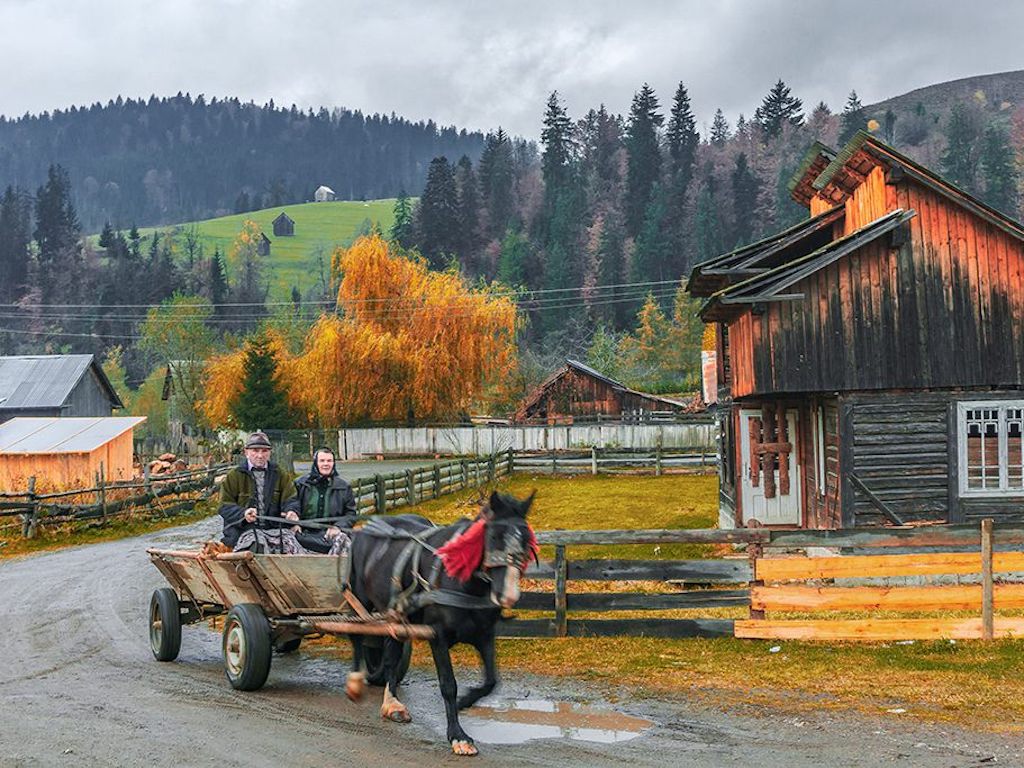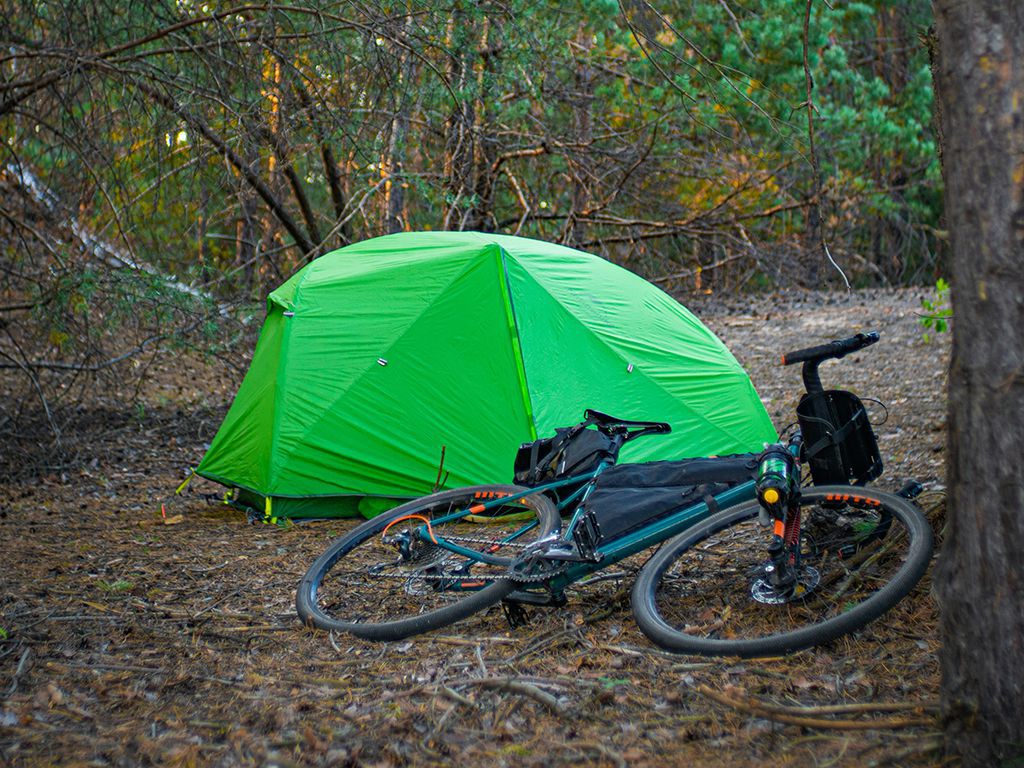 by Peter Illés on February 11th, 2023
by Peter Illés on February 11th, 2023
Let's be honest. Romania is not the first country you think about when it comes to your next cycling adventure. But if you like to do your research and planning, you can come up with some terrific bike tours. If you visit Romania, medieval towns, endless rolling hills, dense forests and towering mountains await you. And wherever you go, you can be sure that you will receive a warm welcome.
Romanians like to flaunt their social status. The larger the house, the fancier the car, the better. Riding your bike puts you in a lower social bracket. Fortunately, this is starting to change, with the younger generation becoming more environmentally conscious, and we see more and more people using their bikes for commuting.
As for using your bike for recreational purposes, Romania is definitely in the mountain bike camp. No wonder, as there are hundreds of kilometres of great forest roads and single trails to ride.
Bike touring and road cycling are also becoming more and more popular, with several clubs being active across the country.
Non-existent. That pretty much sums it up.
Apart from some painted strips of sidewalk in some cities that politicians boastfully call bike paths, there is no noteworthy cycling infrastructure in the country. Outside of towns, we know of only a handful of bike paths.
On the upside, Romania offers a vast selection of B-roads and gravel roads to choose from. There are four types of roads in Romania:
Komoot is a great app that you can use to plan your trip if you want to avoid traffic and use gravel roads instead. However, after heavy rain, some of these roads, especially those used by tractors, are untravellable because of all the mud.

Horse-drawn cart are still a common site on Romanian roads.
No good news on this front, either. Drivers are not used to sharing the roads with cyclists. They are impatient and don't allow for a safe passing distance. So you need some awareness, a sturdy helmet and some experience when riding your bike. Our tours always take you on quiet backroads and gravel roads that we have tried and tested before.
Unfortunately, stray dogs are a huge issue when cycling in Romania. I don't think I ever had a riding day when I wasn't chased by a dog or two. On the other hand, I never had anything bad happen to me (well, apart from having to dismount and walk for a while). Most stray dogs are just mesmerized by your wheels spinning, so they run alongside you, trying to catch it. If you dismount, they'll lose interest.
Shepherd dogs can be more dangerous. Flocks of sheep are still common in rural Romania, and herding dogs always guard them. If you encounter them, dismount and wait for the shepherd to dismiss them.
Even if you can get by most of the time by dismounting, carrying a sonic dog repellent or a dog-friendly pepper spray might come in handy. If the worst-case scenario happens, and you get bitten, get to a hospital as soon as possible to get your shots.
There are other stray animals you might encounter. Bears are an issue around Transylvania since their natural habitat is shrinking at an alarming pace. Because of this, they are wandering ever closer to towns to find food. Fortunately, the largest animal I had to face off with was a cow.
If you encounter a bear, check if there are cubs nearby and ensure you haven't cut off their way to their mother. Try to retreat slowly and get as far away as possible. If all else fails, try to scare them. Make yourself as big as possible (wave your arms, raise your backpack over the top of your head) and make some noise!
If you want a more detailed breakdown of cycling safety in Romania (including dogs, bears, and traffic) we’ve written a full guide here.
If you're thinking of bikepacking on your next cycling holiday, Romania is a great choice. Legally, wild camping is not allowed. Practically though, you can put up your tent given the following conditions:
I've done a lot of wild camping in Romania and never had any issues. I recommend choosing a quiet spot, preferably out of sight. Don't bother with fenced-up private lands, as there'll be plenty of choices down the road.
Getting a small fire going is also acceptable. Just be sensible about it. Keep a safe distance from the forest, take extra care during the dry season and never leave the fire unattended. If you keep to these rules, you can end your riding day with a nice slice of fried slănină (Romanian bacon), the kind of simple, local food cyclists encounter all over the country.

Although wild camping is not legal, it is never really enforced.
The terrain you'll encounter in Romania is as varied as it gets. Some parts in Banat, Wallachia and Moldova are flat, though it gets hillier in the Subcarpathians. Transylvania is mostly hilly, but gradients will generally stay below 10%. If you wander onto gravel roads, you can expect heavier inclines that require you to pushbike.
If you want to push, scrape and pull on the uphills, you should look towards the Carpathians. If you're near Brașov, then you can ride up to Poiana Brașov and then down to Râșnov, which is the classic training ride of locals.
DN7A between Petroșani and Brezoi doesn't have too much traffic either. You can combine it with the Transalpina, which intersects at Obârșia Lotrului.
And then there's the Transfăgărașan, the most famous road in Romania. 20 hairpins will take you over the top of this challenging ascent, which rivals some of the best climbs in the Alps.
In some parts, cash is the preferred method of payment, so it's essential to have some on hand. Also, in rural areas, an ATM will take a lot of work to come by.
What I have described above could make you hesitant to travel to Romania for your next cycling holiday. Sure, bike paths are very few and far between. Drivers are not used to cyclists, and there's a slight chance you might even be chased by a bear.
But with careful planning, the right equipment, and a sense of adventure, you can have a truly unforgettable experience on two wheels. Romania and Transylvania, in particular, are raw, unspoiled, and filled to the brim with fantastic landscapes, friendly locals and history.
Whether you're an experienced cyclist or a beginner, I know there's a route in Romania that is perfect for you. So, pack your bags, hop on your bike, and get ready for an adventure you'll never forget!